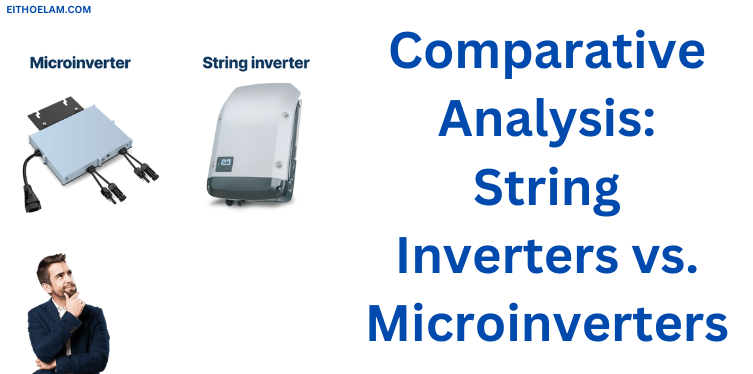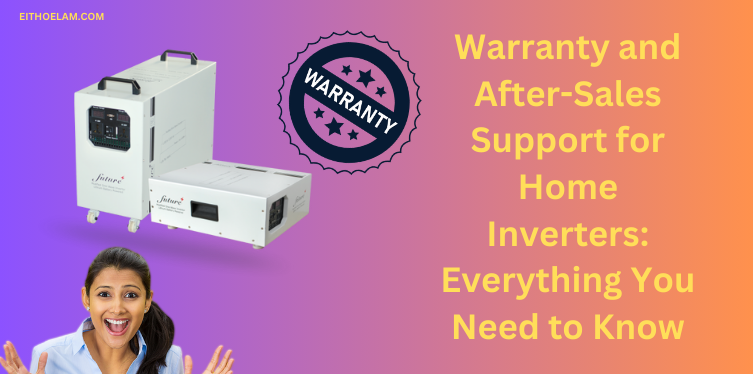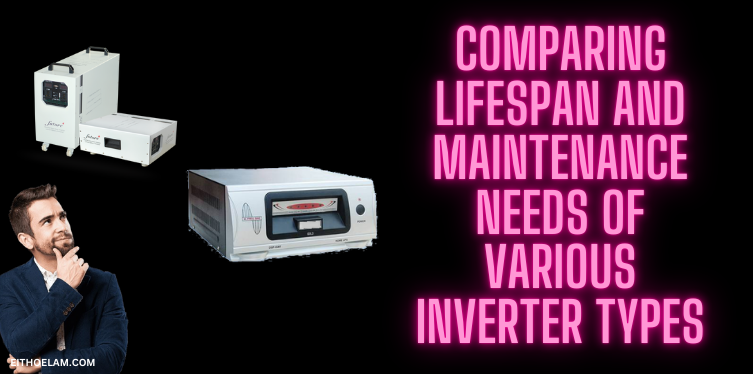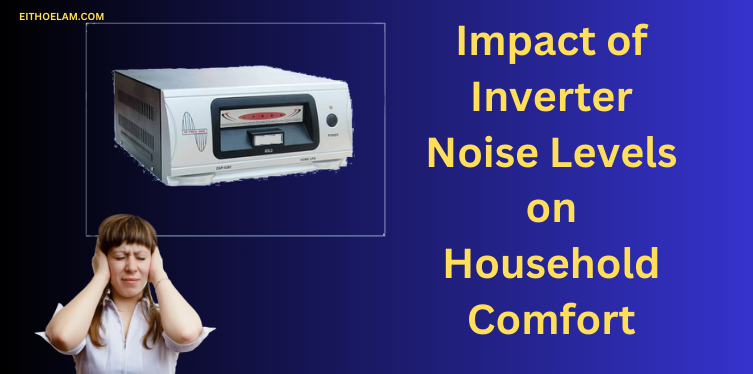Introduction
Of course, one of the most important elements in any solar power system is the inverter. Essentially, it’s what converts the DC electricity created by the panels into AC electricity, whereby your house or business would use it. In recent times, two have mainly dominated the options for usage with solar power systems: the string inverter and the microinverter. But which one will suit you better? We are going to take a closer look at both these types of inverters, compare features, advantages, disadvantages, and general performance to help you make a better decision for your solar installation.
Understanding String Inverters
The most common types of inverters used on a solar installation are those string inverters, also simply referred to as centralized inverters. A system with central inverter consists of lots of solar panels connected up in series to form the so-called “string,” then connected to a centralized inverter, which inverts the DC electricity from each and every panel into alternating current.
String inverters are quite popular due to their cost-effectiveness and simplicity. They’re used in larger solar systems with a lot of panels connected in parallel. The central inverter is usually mounted at the wall or in a utility room and usually interfaced with the utility grid.
Advantages of String Inverters
- Cost-Effective: Microinverters are more expensive compared to string inverters in general. Generally, most homeowners who consider solar power tend to select the option that saves on upfront costs for their solar power system.
- Simplicity and Efficiency: Installation and servicing of a string inverter are relatively simple. They have a central system, thus easier to troubleshoot and service when problems arise.
- Better for Larger Installations: string inverters are suitable for large power systems that can be mounted on single roofed tops or large lands with limited shades. That is to say, even though it is a bigger system, string inverters should not be expected to exhibit any serious flaws in feeding the entire energy needs within the system.
- Long Lifespan: A string inverter typically tends to have a long lifespan up to nearly 10-15 years, depending on the company and quality of the product.
Disadvantages of String Inverters
- Reduced Efficiency in Shaded Areas: Again, similar to string inverters, panels are placed in series with each other, thereby at least one panel would be shaded out and there would go part of the efficiency. It makes it such that the overall strength of the string depends on its weakest member, which leads to having possible loss when sometimes being monumental.
- Limited Monitoring Capabilities: Ability Another limitation of a string inverter is that you cannot monitor the performance of each panel individually. Information is only available at the string level, making it quite challenging to identify issues related to specific panels.
- Single Point of Failure: The solar power system fails if the string inverter fails until it can be repaired or replaced. It will probably spend more time down compared with a microinverter-based system where each panel can work independently.
Understanding Microinverters
Microinverters are another type, newer than the others of inverters, mounted directly onto a photovoltaic module of the system. Not each module has its separate inverters, which have then the task of central, common inverters: changing within the micro-inverters the DC electric generated by that module, into the AC electricity type.
The microinverter is mostly used for smaller residential installations of solar. They are emerging in commercial applications. Basically, what these inverters try to do is they maximize the energy coming from each panel so that it performs as a whole with efficiency.
Advantages of Microinverters
- Optimized Performance: The most significant benefit of a microinverter is the fact that it maximizes performance for each panel. This implies that if one of the panels in the system is shaded or not performing so well, the other panels will not be affected and might produce stronger energy.
- Enhanced Monitoring Capabilities: With microinverters, monitoring is much better than with string inverters. In such a system, for instance, performance monitoring can be done individually. You will find a malfunction in one of your panels much sooner.
- No Single Point of Failure: No Single Point Failure Because each panel has its own microinverter, there is no point of failure. Even if a microinverter fails, the rest of the system works perfectly. You would have to go through the same kinds of downtime you would get with a string inverter system.
- Better for Shaded Areas: Extremely Beneficial to Partially Shaded Systems Micro-inverters are of excellent benefits to homeowners with some part of their roof either tree or obstruction shaded sometimes throughout the day. Due to the individual characteristics of panels in the system, the effect of partly shaded panels will not negatively affect the rest of the system.
- Longer Lifespan: The lifespan of a microinverter is a bit more compared to the string inverters. They may be serviced for many years past 20 to 25 years or even more. Such extended lifespan makes it worthwhile for the homeowner to have the assurance that his solar system remains on longer.
Disadvantages of Microinverters
- Higher Cost: Comparatively, microinverters tend to be more expensive compared to string inverters. With each panel requiring an individual inverter, the price of the system increases with very high speed, creating a tighter budget for those falling under a tight budget bracket.
- Complex Installation: The microinverter is more complex than the string inverters. It requires mounting one on each panel, thereby increasing installation time and labor costs.
- Increased Maintenance and Repair Costs: Although microinverters have a longer lifespan, they are also more expensive to replace or repair. Replacing or repairing one of the microinverters might be more costly than replacing a string inverter in case one of the former fails.
Also Read: Warranty and After-Sales Support for Home Inverters: Everything You Need to Know
Comparative Analysis: String Inverters vs. Microinverters
Now that we’ve covered the advantages and disadvantages of both string inverters and microinverters, let’s compare them head-to-head in key areas:
- Cost: Microinverters are very expensive compared to string inverters. For homeowners with a tight budget, they are the only option.
- Efficiency: Microinverters are more efficient, especially when there is shading. Since every panel has its own inverter, degradation in performance due to shading is less likely compared to the use of string inverters.
- Monitoring: The microinverters are better for monitoring purposes since you can monitor each single panel performance. String inverters just provide data about the performance of the whole system.
- Reliability: This is one of the strongest aspects of microinverters in which reliability, since each panel is connected to its personal inverter, there is an absolute chance of a point-of-failure situation because once one fails, it does not stop. If even a failure occurs in the string inverter, it falls the whole system.
- Installation: Installation string inverters is also easier and less time-consuming as one string inverter needs mounting. Inverters on the other hand necessitate a more complex type of installation since each will have an inverter set on it.
- Lifespan: Microinverters have a longer lifespan; the lifespan of microinverters is typically 20 to 25 years, while the lifespan of string inverters is around 10 to 15 years.
- Maintenance: Even though microinverters require less overall maintenance, when something goes wrong, it may cost more money and take more time to replace a microinverter than fixing a string inverter.
Which One Should You Choose?
The choice between the two may depend on several factors, for instance, the size of your solar system, and whether your house has shading, among other things.
- A string inverter is better suited to a large installation where there is little or no shading, in which it is likely to be more economical and structurally less complicated.
- If it’s a smaller system or your panels are shaded, it will result in better overall performance and energy efficiency with microinverters.
To finish, both string inverters and microinverters have places in the solar industry, so consider your specific needs and get a professional to assess which one is right for your solar power system.
Conclusion
In this comparative analysis of string inverters versus microinverters, both have been seen to have their pros and cons.
String inverters are relatively cheap and work well with large installations without much shading, but microinverters offer with greater efficiency and tracking. Hence, they suit the houses which have partial shading problem or smaller size of the install. The key is recognition of your particular need to balance cost with a measure of performance.
Whether you use one, or another, you’ve realized the full potential of the sun’s energy and curbed your dependence on old-style sources of electricity.
FAQs
1. What is the main difference between string inverters and microinverters?
The main difference is that string inverters are centralized and convert the power from multiple solar panels at once, while microinverters are attached to each individual panel and convert the power from each panel separately.
2. Which inverter is better for shaded areas?
Microinverters are better for shaded areas because they allow each panel to operate independently, ensuring that shading on one panel does not affect the performance of the entire system.
3. Are microinverters more expensive than string inverters?
Yes, microinverters are typically more expensive than string inverters because each panel requires its own inverter.
4. Do microinverters last longer than string inverters?
Yes, microinverters tend to have a longer lifespan, often lasting 20 to 25 years, while string inverters typically last 10 to 15 years.
5. Can I monitor the performance of individual panels with string inverters?
No, string inverters provide data on the overall performance of the entire system but do not allow you to monitor the performance of individual panels. Microinverters, on the other hand, provide detailed monitoring for each panel.
Disclaimer: This research utilizes artificial intelligence (AI) to gather insights and support analysis on the topic.






Leave a Comment